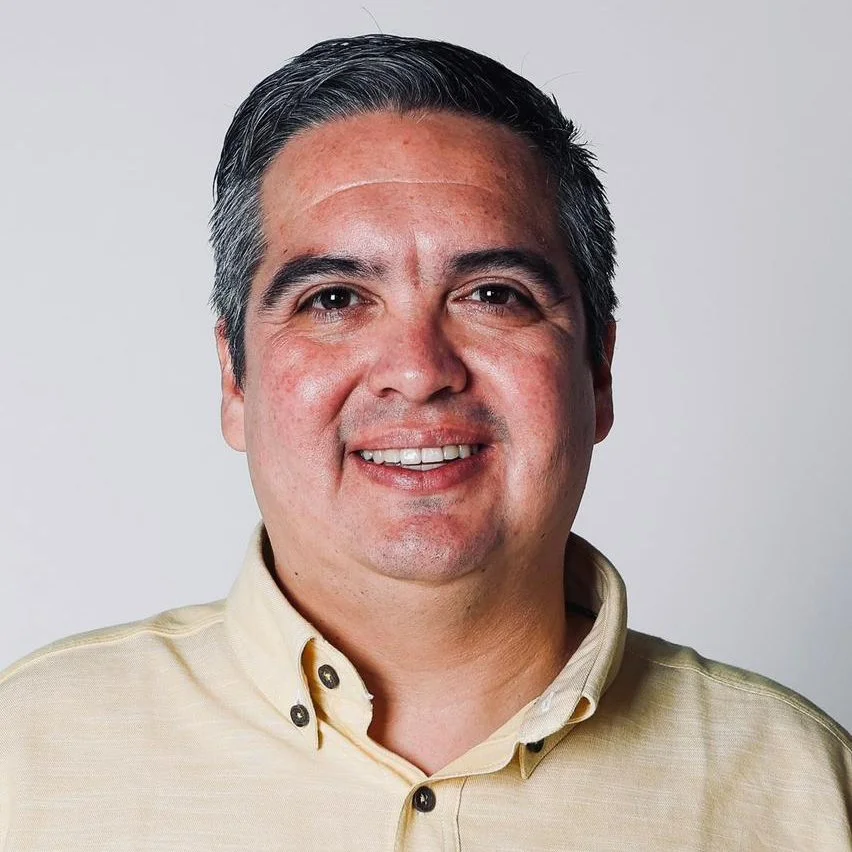Mexico's Interoceanic Corridor Set to Transform Vital Ecosystems into Industrial Zones
Video by Diego Prado/El Universal
A Mexican government report predicts that industrializing the Isthmus of Tehuantepec will devastate natural areas, turning them into polluted industrial zones with contaminated water, infertile land, polluted air, and widespread animal deaths.
Editor’s note: This investigation was originally published by El Universal and co-published in English by palabra.
Under the promise of “development” for Oaxaca and Veracruz, the Mexican government will transform an area rich in natural resources into an industrial landscape with The Interoceanic Corridor of the Isthmus of Tehuantepec. Despite government claims, indigenous people have been excluded from the project that is changing their territory and culture, driving land dispossession and increasing violence.
Haz clic aquí para leer este reportaje en español.
It is a mosaic of greenery. The railroad of the Interoceanic Corridor of the Isthmus of Tehuantepec disappears among the foliage of trees that vary along the train’s path. Sometimes the trees are sacred mesquites or centennial elephant ears. Sometimes they are ocote pines, oaks or mango trees that produce fruit available to anyone who wants to pick it. The railroad also crosses rivers, surrounds hills and reaches the sea.
Beyond the train tracks, in the 79 municipalities of Oaxaca and Veracruz where the project will run, biodiversity abounds. Hawks fly above the dunes of beaches, hummingbirds flit about the jungle, and eagles soar in mountain skies. The Isthmus also boasts white-tailed deer, pumas, and reptiles. Thousands of animals are at home there.
This is one of the most biodiverse regions of the country and it is at risk, as recognized by the Interoceanic Corridor of the Isthmus of Tehuantepec (CIIT ), the public agency in charge of the project and which is currently under the control of Mexico’s Navy Ministry.
In a governmental report, the CIIT recognizes that the project “will create an urban industrial landscape” that will not only change the region’s greenery but will also result in contamination of surface and groundwater and air and soil. It will also leave land infertile and provoke mass death of fauna and flora.
Source: This information was obtained from the analysis of land use distribution in Mexico provided by the National Institute of Statistics and Geography (INEGI in Spanish)
The lengthy name of the document is “Identification of Potential Impacts to the Physical and Biotic Environment Derived from the Establishment of the Development Sites (PODEBI in Spanish) of the Interoceanic Corridor of the Isthmus of Tehuantepec.” Five pages detail the changes that will result from taking advantage of the natural resources of this territory. The document was obtained from public records requests for this investigation.
Thousands of animals will die during construction once the new industry is in operation. “When the vegetation cover is removed, wildlife loses the conditions for its survival,” the report acknowledges. Species that are better able to move and adapt, such as birds, will survive. But those that move slowly, such as reptiles and small mammals, “will lose most of their population,” the document states.
The CIIT provided this information to the National Institute of Indigenous Peoples in 2020 and 2021, so it could be taken into consideration when deciding whether or not to consult indigenous communities on the impacts of industrial parks. The findings warn that “potential impacts have been identified” and should be considered in order to establish measures to prevent, mitigate, or compensate for the damage.
However, in the same report, the Mexican government acknowledges that the magnitude of the massive intervention in the Isthmus of Tehuantepec is unclear. The development of this megaproject has been divided among several companies, each responsible for analyzing the impact in the specific areas where they will operate.
A young fisherman observes the Espantaperros, a waterway in Unión Hidalgo in Oaxaca, which was filled in to build part of Line K of the Interoceanic Railroad. Photos by Valente Rosas/El Universal
The Mexican government has touted this area as “an ideal destination for relocation (nearshoring) due to its natural resources,” as heard in ads officials have released promoting the Corridor project. Even former President Andrés Manuel López Obrador has spoken in favor of these actions: It’s important “to take advantage of the natural resources of the south and southeast, especially to take advantage of water,” he said in 2019, during the signing of the Oaxaca Pact, where he announced the industrial development of the region.
The archives of the Ministry of Environment and Natural Resources (SEMARNAT) are home to nine Environmental Impact Assessments (EIA) linked to the Corridor and obtained by El Universal. Five of these assessments are related to the rehabilitation of fragments of existing railway lines. Three of them in the ports of Salina Cruz and Coatzacoalcos. Only one assessment found is about the Texistepec PODEBI.
EIAs are studies that reveal the consequences of intervention in a natural space. In the case of Interoceanic, information concerning the magnitude of the megaproject is scarce. Its impacts have not been analyzed as a whole, but individually. Nevertheless, they will leave irreparable damage in the long term.
SEMARNAT was asked for a statement but at press time they had not responded. The Navy Ministry sent its responses to El Universal’s questions on the evening of September 23. Officials said that conducting an environmental study that includes all the works of the megaproject is not possible because the planned industrial activities are varied.
The Navy Ministry also stated that “the development promoted by the Interoceanic Corridor of the Isthmus of Tehuantepec is characterized by full respect for the environment.”
Water, the new gold
Within the wealth of the Isthmus, there is a treasure that stands out. Water is the most valuable resource for industrial development, and it is one that no other area in the country can comparably offer. The area has estuaries and rivers, lagoons, springs, marshes, mangroves and swamps. It is also rich with marine ecosystems in both the Gulf of Mexico and the Pacific.
“Seventy percent of the country’s water is in the south-southeast. There are serious problems in the center and the north due to lack of water. And we have the Papaloapan, the Grijalva, and the Usumacinta (rivers) in the south-southeast which is fundamental,” Mexico’s president publicly highlighted in 2019.
Wherever water interests are involved, the greatest environmental impact is seen. Water quality will be affected during the construction stage of the PODEBI by materials that will fall into bodies of water. There will also be changes to currents and pollution of aquifers, the CIIT, the agency in charge of the Corridor, acknowledges in documents.
“We know that for the development sites, millions of liters of water are essential. What we have in the Sierra are many springs and rivers. Water is already being taken to Coatzacoalcos, Minatitlán, and Cosoleacaque. But the risk is growing to the water that we still have,” warns Verónica Monier of the Centro de Derechos Humanos de los Pueblos del Sur de Veracruz ‘Bety Cariño’ (Bety Cariño Human Rights Center for the Peoples of Southern Veracruz).
Water for the Indigenous communities in Oaxaca and Veracruz is more than an exploitable good: it is part of their cosmovision (vision of the universe), Monier explains, and it comes down from the mountains to fill with life everything it touches.
Tatahuicapan de Juárez is part of the Los Tuxtlas Biosphere Reserve in Veracruz, one of Mexico’s most important Natural Protected Areas. Photo by Valente Rosas/El Universal
The indigenous community of San Juan Volador has a link to the sea and the Tuxtlas mountains. They are concerned about the impacts that industrial development will bring to the region. Photo by Valente Rosas/El Universal
“They are virgin waters that come from the Sierra, from high in the mountains. They are not polluted. We want to continue conserving this,” says Balfred Palma Riquelme, a native of Mezcalapa in Tatahuicapan, Veracruz. Sitting by the side of the river in his community, he boasts that there you can safely pour yourself a glass of water and drink it.
In April 2022, the former CEO of CIIT, Rafael Marín Mollinedo, stated that the Mexican government would guarantee tax incentives in the Isthmus of Tehuantepec for companies that set up there. He promised “cheap energy,” such as gas and electricity, and “sufficient water for industrial parks.” He assured this during a meeting with authorities and investors from the United States and Canada.
‘It is a Trojan horse that is leaving unprecedented environmental disasters in its wake. No one will travel on this train because its purpose is to provide roads for mining concessions and extractive companies.’
Currently, the Mexican government has not detailed the volume of water that the new industries will need to operate and has only said that they could use subterranean sources, take advantage of the Benito Juarez dam and the Tehuantepec River, and build a desalination plant or treat the water. Responding to questions El Universal sent, the Navy said that the concessionaires “are characterized by having efficient water use mechanisms, based on reuse and recycling, with water saving and reuse plans to reduce consumption.”
However, there are no EIAs that analyze the needs of the industrial parks. The Indigenous communities that have safeguarded water and nature despite the pressure of megaprojects such as this one have not been consulted either.
Fulfilling another investment promise
The Interoceanic Corridor has an impact beyond the natural reserves of the Isthmus. Along the coastline, the cargo ship “Tog Mor” was spotted for the first time in March 2024. It caught the attention of the inhabitants of Tatahuicapan de Juarez in Veracruz, because it remained for months on the horizon of the Gulf of Mexico, advancing little by little until it disappeared.
A boy fishes on the beach of Las Barrillas with the ship “Tog Mor” in the background. The Puerta al Sureste gas pipeline makes landfall in this Coatzacoalcos, Veracruz’s town. Photo by Valente Rosas/El Universal
“At other times, cargo ships were seen passing by, but not this time. It didn't pass quickly, it took a long time until it left, I don't know if it went to Coatza or where,” says Juan Bautista Guillén, member of the Vigilance Council of Zapotitlán, an indigenous community of 528 inhabitants.
In the fishing communities of the coast of Veracruz, the vessel aroused fears, as they discovered that its mission was to develop the Puerta del Sureste Gas Pipeline. It is an essential project to supply natural gas to the industries of the Interoceanic Corridor and other industrial projects in the southeast of the country, such as the Mayan Train and the Dos Bocas Refinery.
“We are concerned about the impact it will have tomorrow, that the gas will spill and affect the animals in the sea. The sea is a source of life,” says Timoteo Hernández Petraca, an Indigenous Nahua inhabitant of San Juan Volador, a town located between the Sierra de los Tuxtlas, designated as a Biosphere Reserve, and the beaches of the Gulf of Mexico.
The project managed by the Federal Electricity Commission (CFE, its acronym in Spanish) seeks to bring natural gas from Texas, in the United States, and is valued at $4.5 billion. It will reach Coatzacoalcos, where there will be two PODEBI sites and Tabasco’s Dos Bocas Refinery.
To make this project a reality, a 715-kilometer-long trench must be dug in the seabed at a depth of 100 to 120 meters. The environmental organization Greenpeace has denounced the plan, arguing that there are valuable biodiverse reef ecosystems with economic importance for the communities of the coast of Veracruz. In addition, risks associated with the transportation of hazardous materials are expected.
Pablo Ramírez, climate and energy campaigner for Greenpeace, explains in an interview that among activists who reject gas pipelines, there is a recurring phrase: “There are two types of gas pipelines, those that have already leaked and those that will.” These spills can cause explosions and fires, modify the chemistry of the water, and affect the marine species that inhabit that strip. Something similar happened in 2021 with the “eye of fire,” after the fracture of a Pemex gas pipeline, near Campeche.
This project will transport the same gas to the Isthmus through the Jaltipan-Salina Cruz Gas Pipeline. It will reach the new liquefaction terminal, a $3 million project, where it will be transformed into liquid to facilitate its export to the Asian continent. It is expected to be in operation by 2025.
“It has been an extremely opaque project. The argument of national security has been a constant to deny information to communities, organizations, and individuals,” warns activist Ramirez.
This has been the same story for all the works linked to the Interoceanic Corridor. Information is scarce or kept in reserve and the damages are minimized in the public discourse.
Underwater photographs of Veracruz reefs taken between May 20 and 25, 2023 during the Greenpeace Arctic Sunrise expedition. Photo by Ivan Castaneira/Greenpeace
Photo by Ivan Castaneira/Greenpeace
Damage is already present
In Unión Hidalgo, Oaxaca, the rehabilitation works of Line K of the Interoceanic Corridor railway obstructed the Espantaperros Estuary, a freshwater lagoon complex of more than 8 kilometers, which flows into the Upper Lagoon of the Ikoot people. It is no longer a flowing stream but a swampy pond. The community members complain that in recent months it has ceased to be the center of economic activity for fishing families. Dead fish, iguanas and wild animals appear, devastated by heavy machinery, community members claimed.
Line K is the longest of the three railroad connections that make up the interoceanic project, with 476 kilometers. It starts in Ixtepec, Oaxaca, and ends in Chiapas, on the border with Guatemala. Here, the government promised a simple intervention, with no environmental effects.
‘It is not development, it is death. Today the peasants in our communities, the teachers, the housewives see it. This is a great disaster for our territory.’
But there, the waters that filter the marine density of the coast have lost connection with the Palmar Forest, a green edge of 829 hectares that now has desert strips. According to community member Edgar Martín Regalado, the Navy cut down around 11,000 trees in this forest. To resist, the community began reforestation of 4,500 trees this year after winning a couple of court orders and media reports that forced the Navy to take responsibility for the disaster.
In the Loma Lope area, dozens of dump trucks are extracting stone material for the megaproject. They have been doing this for months, although representatives of the communal lands have denounced this irregular exploitation to the Oaxaca State Environmental Protection Agency since October 2023. Although inspectors have made promises to close down the clandestine extraction, they have not despite the definitive suspension granted by a federal judge in March of this year.
Edgar Martín is one of the activists who has reported damages to the natural area of Unión Hidalgo following the construction of the K-Line of the railroad. Photo by Valente Rosas/El Universal
“It is a Trojan horse that is leaving unprecedented environmental disasters in its wake. No one will travel on this train because its purpose is to provide roads for mining concessions and extractive companies,” says Martín Regalado, a Binnizá environmental defender who suffered aggressions from police officers for defending this territory.
Support the voices of independent journalists.Until Dec. 31, your donations will be matched dollar-for-dollar. 
|
“The train will be a gap in a new route for migrants who will come from Central America to work in the industrial parks. Line K will be in charge of containing migration in Oaxaca and Chiapas,” Regalado also says.
The Ministry of the Environment and Natural Resources (SEMARNAT), headed by María Luisa Albores González during the six-year term of López Obrador, exempted, without justification, the Navy from presenting the Environmental Impact Assessment. The Navy is in charge of operating this line as the Ferrocarril del Istmo company.
During the modernization of Line Z, which runs from Salina Cruz to Coatzacoalcos, there was also damage allowed by SEMARNAT. In 2019, Ferroistmo requested permission to cut down 1,507 hectares of low deciduous forest to widen the curvature and slope of the train track. The environmental compensation requested by SEMARNAT after approving the logging was 1,400 dollars or .02 cents per square meter.
Sacrifice zones
The government’s land Management Program for the Isthmus of Tehuantepec Region recognizes the environmental contributions of the region, such as climate regulation, erosion control and oxygen production. At the same time, it admits that the industry already present, especially the oil industry, has been its main enemy due to the pollution it has brought with it.
In Jáltipan de Morelos, Veracruz, the industry has left infertile lands, deforested ecosystems, contaminated water and health problems among the population, according to its inhabitants. The land is rich in minerals and chemical elements, including sulfur and silica. Sulfur is used to produce elements that are indispensable for life, such as soap, fertilizer and cosmetics, while silica is used to produce artificial glass, ceramics and concrete. These have been exploited for more than 60 years by the companies Materias Primas Monterrey and Azufrera Panamericana.
In addition, in 2013, the Mexican government authorized the installation of an open-air storage facility for petroleum coke, a highly toxic waste resulting from oil refining.
The coke is black, porous and contains high amounts of heavy metals, such as nickel and vanadium, which are significant environmental pollutants and can have severe effects on animal and human health. The coke from the Minatitlán Refinery is transported in gondolas and through the Interoceanic Corridor train to its storage in Jáltipan, where there are huge mountains of this material.
The Lázaro Cárdenas refinery in Minatitlán, Veracruz, is one of the most significant sources of contamination on the Veracruz isthmus. Photo by Valente Rosas/El Universal
The coke storage facility in Jáltipan, which has been in operation for more than a decade, has caused health problems for the population. The Interoceanic Corridor is expected to create similar spaces in other areas of Oaxaca and Veracruz. Photo by Valente Rosas/El Universal
Julissa Hernández warns that the effects that the Corridor could bring have been visible in Jáltipan since coke arrived 11 years ago. “It is not development, it is death. Today the peasants in our communities, the teachers, the housewives see it. This is a great disaster for our territory,” says Julissa Hernández, doctor and activist for the right to health.
With the new government proposal to promote industrial development in the municipalities surrounding Jáltipan, the inhabitants fear an increase in contamination and damage to their health, crops and animals. Only five kilometers away, in Texistepec, they will have a PODEBI site where the concessionaire wants to install a new coke plant.
What is happening in Jáltipan today is the near future of the rest of the municipalities of the Isthmus. They are the new “sacrifice zones,” places where there will be a massive concentration of industries in favor of national “progress,” but at the expense of the environment and the health of those who live there.
“People from all over the country, we tell you: Do not allow the coke to arrive, do not allow polluting companies to arrive. They are not coming to invest,” warns Julissa.
The Interoceanic railroad will be used to transport containers of goods and materials produced in the industrial parks of the Isthmus of Tehuantepec. Photo by Valente Rosas/El Universal
The Mexican government foresees an investment of $3 billion dollars for a new coking plant that will process the material coming out of the Salina Cruz refinery. It seeks to produce more gasoline, diesel and other fuels. It has not indicated where it will be stored pending processing.
CIIT's environmental impact notes foresee what activists warn could happen throughout the Isthmus territory. Air quality will worsen, according to the CIIT document, because there will be an increase in gas, smoke and particle emissions from the various industrial activities and combustion processes of transportation and complementary services.
The soil will be severely modified as its cover, structure, profile and topography will change, according to the CIIT notes. “These impacts are permanent, inescapable and irreversible since the installation of the new industry depends to a large extent on the modification of the soil.”
The Mexican government recognizes that the landscape will be severely affected. The visual continuity of the green horizon will change and the terrain will be modified, as is already happening in Jáltipan. Its proposal to “soften” this effect is to create parks, urban green areas and architectural elements. This, one of the lungs of the country, will not be the same.
—
Antonio Mundaca, from El Universal Oaxaca, collaborated in this work in the field reporting and writing of the story on Section K.
Alejandra Crail is an investigative journalist based in Mexico, Alejandra Crail has specialized her journalistic approach in corruption, human rights, children's issues, and gender. She has collaborated with several Mexican media outlets such as Emeequis, Gatopardo, and Grupo Expansión. Currently, she is a member of the Investigative and Data Journalistic Unit of El Universal. Her work has been recognized with the Walter Reuter German Journalism Prize (PAPWR) (2018 and 2021), the Breach-Valdez Prize for Journalism and Human Rights (2020 and 2024), and the King of Spain International Journalism Award in 2024. @AleCrail
Valente Rosas holds a degree in Journalism and Collective Communication from FES Acatlán UNAM (1996-2000). He began his photojournalistic career in 2002, in the area of Social Communication of Mexico City's Public Security Secretariat. Since 2005 he has been a photojournalist for the newspaper El Universal, where he reports on drug trafficking, environment, security, and natural disasters. He won the GDA Journalism Award in the category of Environmental Journalism for a report on the Mayan Train.
Diego Prado is an audiovisual producer from the National Autonomous University of Mexico. He has worked as a journalist for 10 years, the last seven at the Mexican daily El Universal. Prados' interests include migration, social and cultural manifestations of diverse communities such as the implication of the development of the Tren Maya in the Yucatan Peninsula, the effects of Hurricane Otis in the port of Acapulco, and the coverage of patron saint festivals in different states of the country.
Silber Meza is an investigative journalist specialized in security, human rights, and corruption. Winner of the National Journalism Award, Walter Reuter German Journalism Prize (PAPWR), and SIP Award, among others. He has taught several courses on investigative journalism. He is a co-author of a couple of books. He is currently the coordinator of the Investigative and Data Journalistic Unit of El Universal. @silbermeza

This investigation was made possible thanks to the dedicated team at El Universal:Project research and coordination: Alejandra Crail Editing: Silber Meza Photography: Valente Rosas Video: Diego Prado Design and web development: Omar T. Bobadilla Data analysis and visualization: Irving Morales Field support: Antonio Mundaca, El Universal Oaxaca English adaptation: Susan Ferriss |























